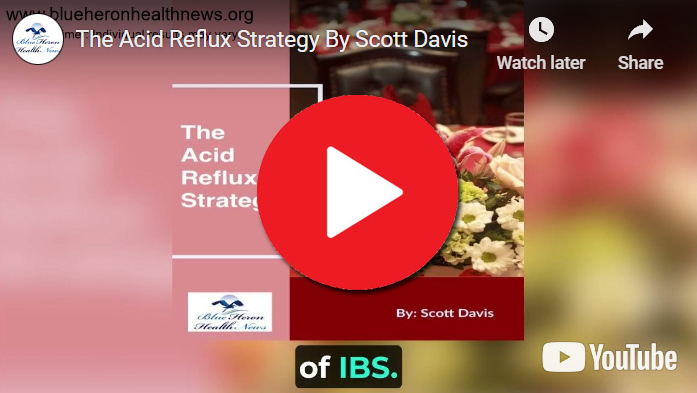
Acid Reflux Strategy™ By Scott Davis According to this eBook, you can start removing the symptoms of acid reflux and other similar problems just by making some changes in your diet, levels of stress, and lifestyle. It will guide you on how to change from the combination of food items to the sleep positions to relieve your problems. It also includes a list of food items you should focus on while shopping for it to find a natural treatment for your symptoms.
What are the most recommended dietary changes for acid reflux patients in the USA?
Recommended Dietary Changes for Acid Reflux Patients in the USA
Dietary modifications are crucial for managing and reducing the symptoms of acid reflux or gastroesophageal reflux disease (GERD). The following are the most recommended dietary changes for acid reflux patients in the USA:
1. Avoid Trigger Foods
1.1 High-Fat Foods
- Examples: Fried foods, fatty cuts of meat, full-fat dairy products, butter, and creamy sauces.
- Reason: High-fat foods can slow down stomach emptying and relax the lower esophageal sphincter (LES), increasing the likelihood of acid reflux.
1.2 Spicy Foods
- Examples: Hot peppers, chili, curry, and spicy sauces.
- Reason: Spicy foods can irritate the esophagus lining, exacerbating reflux symptoms.
1.3 Acidic Foods
- Examples: Citrus fruits (oranges, lemons, grapefruits), tomatoes, and tomato-based products (sauces, ketchup).
- Reason: Acidic foods can directly irritate the esophagus and increase stomach acidity.
1.4 Caffeinated Beverages
- Examples: Coffee, tea, energy drinks.
- Reason: Caffeine can relax the LES and increase stomach acid production.
1.5 Carbonated Beverages
- Examples: Soda, sparkling water.
- Reason: Carbonation can increase stomach pressure, leading to acid reflux.
1.6 Chocolate
- Reason: Contains methylxanthines, which can relax the LES and promote reflux.
1.7 Mint
- Examples: Peppermint, spearmint.
- Reason: Mint can relax the LES, leading to increased reflux.
2. Incorporate Reflux-Friendly Foods
2.1 High-Fiber Foods
- Examples: Whole grains (oatmeal, brown rice), vegetables, fruits (bananas, apples, melons).
- Reason: High-fiber foods can help with digestion and reduce the likelihood of reflux.
2.2 Low-Fat Foods
- Examples: Lean meats (chicken, turkey), fish, low-fat dairy products, legumes.
- Reason: Low-fat foods are less likely to trigger reflux and help maintain a healthy weight.
2.3 Alkaline Foods
- Examples: Leafy greens (spinach, kale), cucumbers, broccoli.
- Reason: Alkaline foods can help neutralize stomach acid.
2.4 Non-Citrus Fruits
- Examples: Melons, bananas, apples, pears.
- Reason: These fruits are less acidic and less likely to cause reflux.
3. Modify Eating Habits
3.1 Eat Smaller, More Frequent Meals
- Reason: Large meals increase stomach pressure and the likelihood of reflux. Eating smaller, more frequent meals reduces this risk.
3.2 Avoid Eating Before Bedtime
- Recommendation: Avoid eating at least 2-3 hours before lying down or going to bed.
- Reason: Lying down with a full stomach increases the risk of acid reflux.
3.3 Chew Food Thoroughly
- Reason: Thoroughly chewing food aids digestion and reduces the risk of reflux.
4. Hydration
4.1 Drink Water Between Meals
- Recommendation: Drink water throughout the day but limit large intakes during meals.
- Reason: Drinking water can help dilute stomach acid and promote digestion but drinking too much during meals can increase stomach pressure.
5. Lifestyle Modifications
5.1 Weight Management
- Reason: Excess weight, especially around the abdomen, can increase stomach pressure and lead to acid reflux. Maintaining a healthy weight can reduce symptoms.
5.2 Elevate the Head of the Bed
- Recommendation: Raise the head of the bed by 6-8 inches.
- Reason: Elevating the head during sleep can help prevent stomach acid from flowing back into the esophagus.
5.3 Avoid Tight Clothing
- Reason: Tight clothing can put pressure on the abdomen and LES, increasing the risk of reflux.
Conclusion
Implementing these dietary changes can significantly reduce the symptoms of acid reflux and improve the quality of life for patients in the USA. Avoiding trigger foods, incorporating reflux-friendly foods, modifying eating habits, staying hydrated, and making lifestyle modifications are key strategies in managing acid reflux. Patients should work closely with healthcare providers to develop a personalized plan that suits their specific needs and conditions.
Acid Reflux Strategy™ By Scott Davis According to this eBook, you can start removing the symptoms of acid reflux and other similar problems just by making some changes in your diet, levels of stress, and lifestyle. It will guide you on how to change from the combination of food items to the sleep positions to relieve your problems. It also includes a list of food items you should focus on while shopping for it to find a natural treatment for your symptoms.
